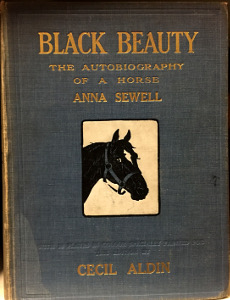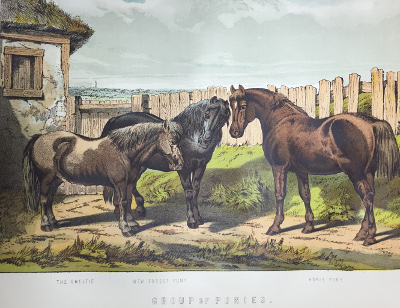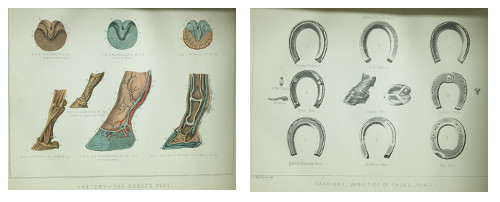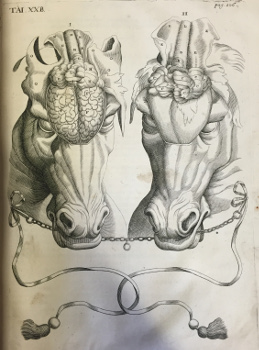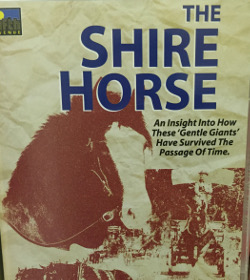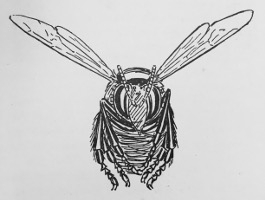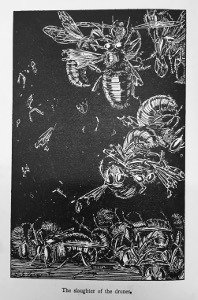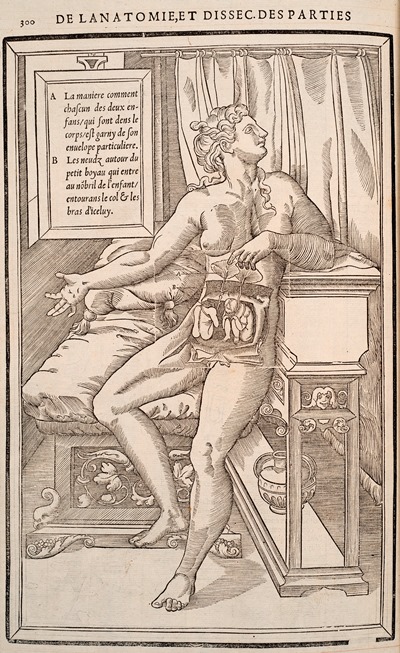Written by Louise Cowan, Trainee Liaison Librarian
Our Special Collections Library and Archive is full of interesting creatures, big and small. They can be found everywhere from our Children’s Collection story books to the detailed scientific tomes of our Cole Library. So far we’ve explored the Ducks, Horses and Bees but today is the turn of the graceful Cat. Here are just a few of my favourite titles on Cats from our collections:
Cats in Literature
Orlando the Marmalade Cat – Kathleen Hale
[Children’s Collection 823.9-HAL]
This beautiful series of Children’s books created by Kathleen Hale feature the adventures of Orlando the
ginger cat, his wife Grace and their three kittens, Pansy, Blanche and Tinkle.
In ‘Orlando’s Invisible Pyjamas’ poor Orlando gets himself covered in paraffin oil, which makes him bald from waist to tail. Grace manages to coax Orlando from hiding with the promise of knitting him some fur pyjama trousers. While Grace knits, Orlando regales the kittens with stories from their family photo album.
According to MacCarthy (2000), Hale wrote to “reinvent a childhood, to recreate the domestic structure she had so badly lacked.” And the bright story books with their tales of a tightly knit family of cats were a perfect distraction for children during WWII. Indeed the bright colours of the ‘Orlando’ books are one of their best features; inspired by the series ‘Babar’ (Jean de Brunhoff), Hale had “envisaged a large format book in seven colours,” (MacCarthy, 2000) and although after some convincing from her publisher, only four were used, the effect is just as attractive. After the publication of her first two Orlando books, Hale even learned the art of lithography herself, (Roberts, 2014) her efforts with the medium setting new standards for Children’s illustrated books.
As well as copies of a number of Hale’s books, our collection also includes archival material relating to their publication, such as uncorrected proofs of the text, holographs, typescripts and carbon typescripts.
For more information on Orlando see our 2007 featured item, Kathleen Hale, Orlando (The Marmalade Cat) buys a farm, 1972
Sources:
Roberts, P. (2014) Orlando the Marmalade Cat
MacCarthy, F. (2000) Obituary: Kathleen Hale
Cats in Music and Art
Tabby Polka by Procida Bucalossi / Louis Wain
[Spellman Collection of Victorian Music Covers – Box 11]
This charming image comes from our Spellman Collection of Victorian Music covers, which consists of around 2,500 Victorian sheet music covers, illustrating virtually every aspect of Victorian life, culture
and preoccupations.This particular piece, dating to c.1865 was composed by Procida Bucalossi (1832-1918), a theatre conductor and composer at the Prince of Wales’s Theatre, London who was known for his dance arrangements for the Savoy Operas. (Stone, 2001).
The artist behind the illustration is Louis Wain (1860-1939), a British artist renowned for his wonderful pictures of cats. Later in life, Wain began to show signs of mental illness but continued to draw and paint. His artwork however, took on an unusual quality and he “produced the first of his fascinating series of “kaleidoscope” cats,” which included intricate geometric patterns and “images in which the figure of the cat is exploded in a burst of geometric fragments.” (Boxer, 2016)
Sources:
Stone, D. (2001) THE D’OYLY CARTE OPERA COMPANY
Boxer, J. (2016) Louis Wain – Henry Boxer Gallery
Cats in Science
Celestial Atlas by Alexander Jamieson, 1822
[Reserve Middle Folio 523 JAM]
One of the many constellations described in “A Celestial Atlas” by Alexander Jamieson in 1822, Felis was composed by French astronomer Jerome de Lalande in 1799 from stars between Hydra and Argos Navis. Sadly Felis did not make the list of 88 modern constellations when the IAU (International Astronomical Union) created an official set of constellation boundaries in 1930.
Sources:
International Astronomical Union, (2016) The Constellations
Ridpath, I. (2016) Felis the Cat
The Cat by St. George Mivart, 1881
[Cole Library 185]
‘The Cat’ by British biologist St George Mivart is a fascinating, in-depth study of our feline friends. The book provides highly detailed anatomical descriptions and illustrations, such as this of the cat’s paw:
Of these [pads of the feet] there are seven in the fore paw, and five in the hind paw. Each pad consists of a mass of fibrous tissue and fat and a large trilobed one is placed beneath the ends of those bones on which the animal rests in walking.
Many of the careful illustrations, particularly those of the cat’s muscles, have been coloured over and annotated, showing that the book was very much in use by its owner.
As well as anatomy, ‘The Cat’ also delves into the development and psychology of the cats, and one of my favourite features of the study are the small footnotes which include interesting anecdotes about the nature of the cat, such as this one from p369:
Mr Douglas A. Spalding found kittens to be imbued with an instinctive horror of dogs before they were able to see it. He tells us: – “One day last month, after fondling my dog, I put my hand into a basket containing four blind kittens, three days old. The smell my hand had carried with it set them puffing and spitting in the most comical fashion.” (Nature, October 7, 1875. P507)
All items are available upon request, find out more about using our Library and Archives here.



![Tabby Polka [Spellman Collection]](https://blogs.reading.ac.uk/special-collections/files/2016/06/tabby-polka-230x300.jpg)



![gif of cat anatomy from Anatomie descriptive et comparative du chat by Hercule Straus-Durckheim, 1845. [Cole Large 09]](https://blogs.reading.ac.uk/special-collections/files/2016/06/catAT3.gif)
